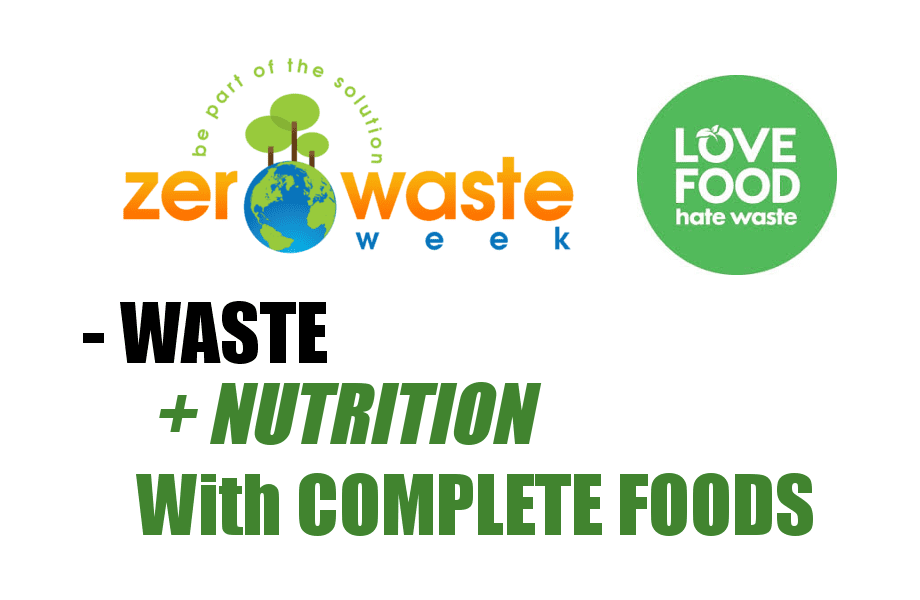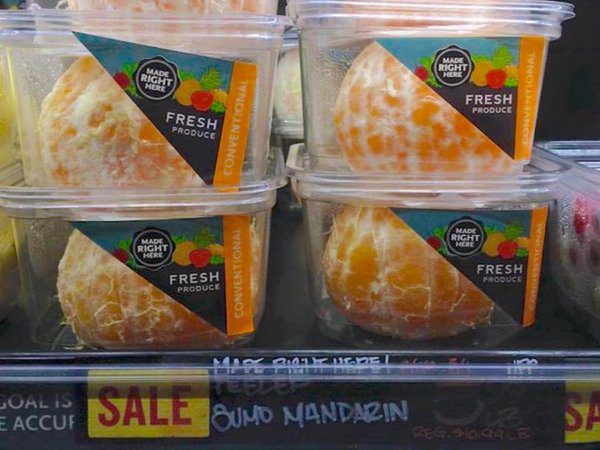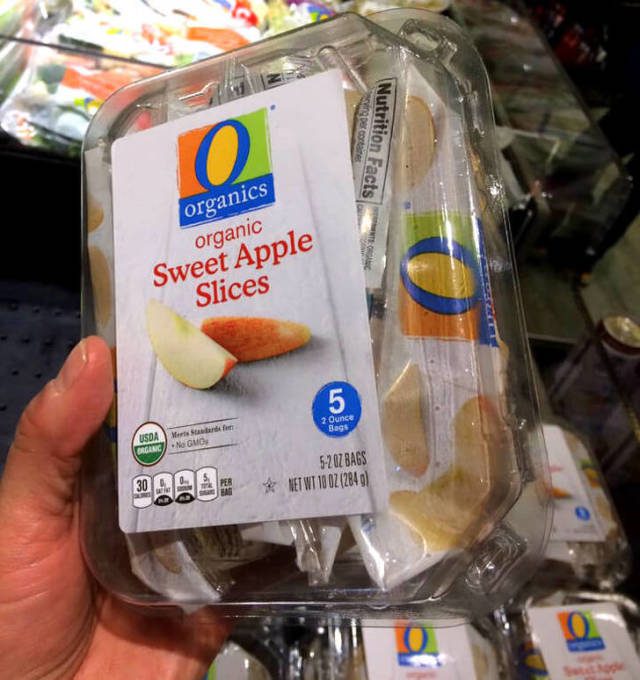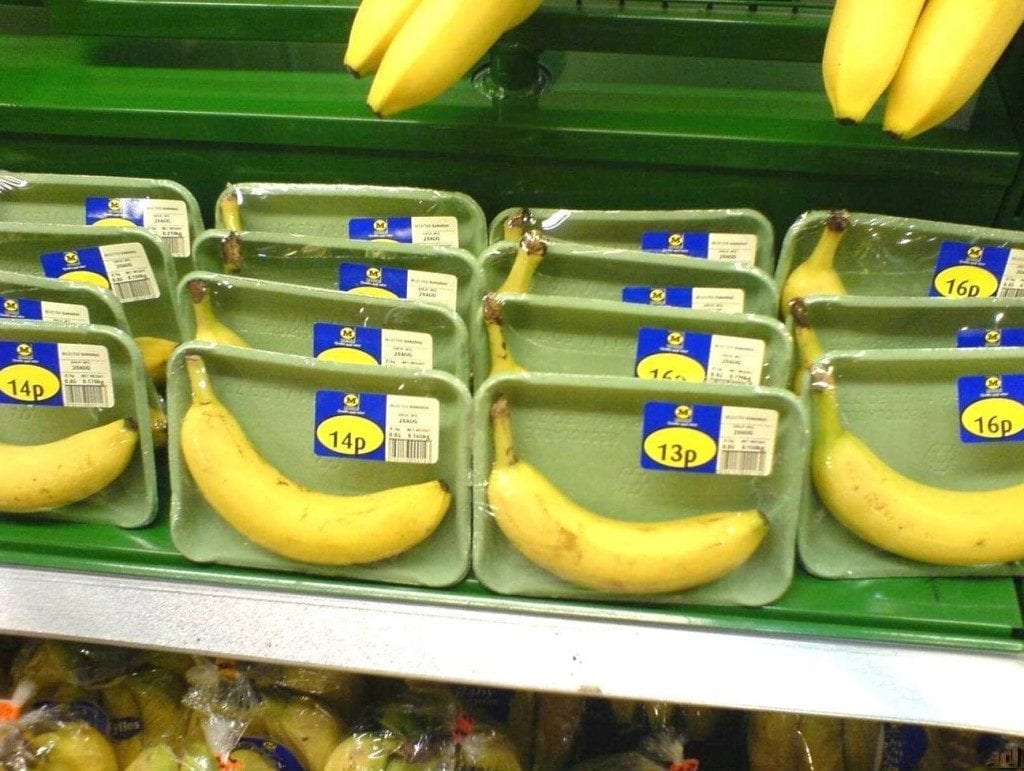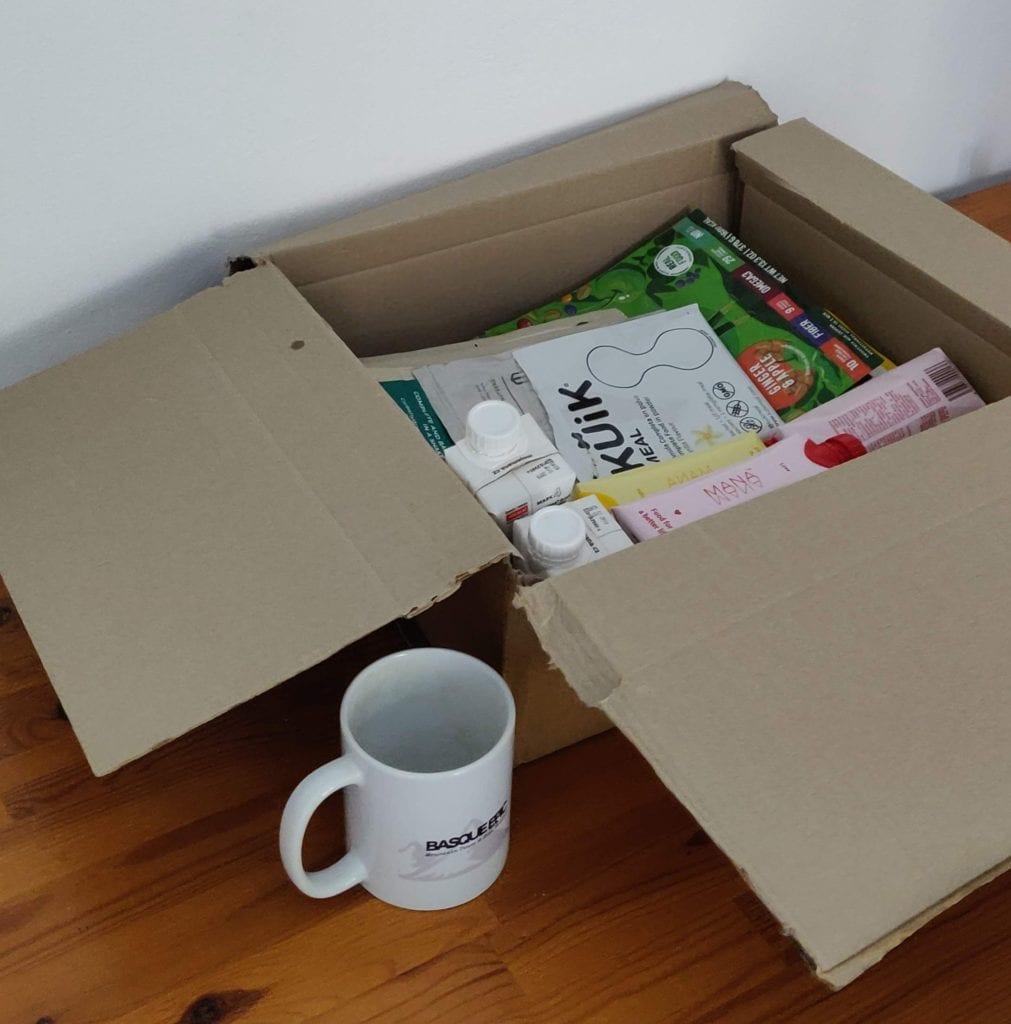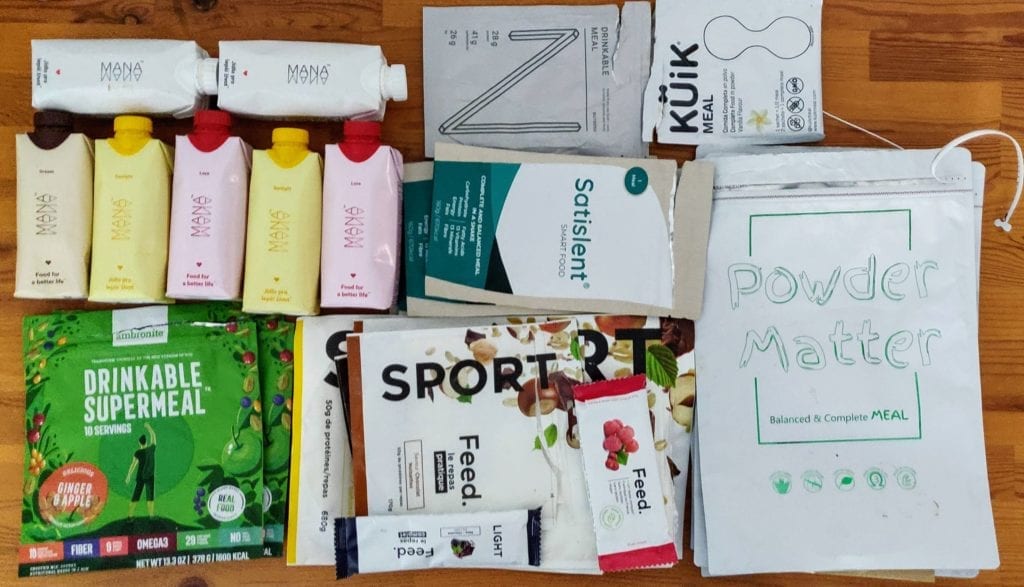How to Reduce Waste and Improve Your Diet with Meal Replacements
It is the Zero Waste Week in the UK, an initiative to reduce both the food waste and the general waste that we produce. Started in 2008 is an initiative that has gathered a lot of following, in order to protect the environment, save money and improve our skill when using resources. Today, I will let you know how meal replacements can help you reducing waste and improving your diet at the same time.
Food, a Continuous Source of Waste
Big part our weekly waste is food related. Packaging, boxes, food, bottles… This is where meal replacements can have a huge positive influence in our society and help you out with the Zero Waste Week. Not only for this week, but for a long term more efficient management of waste generated around food.
Reducing food waste is the third most efficient way to positively impact the environment.
Project Drawndown
Personal Waste
At the end of the day, everyone has bought food that has slowly rotten at the back of our fridges. Vegetables that we thought we were going to eat, but never cooked. Or that half opened bacon pack, that we could never finish. We sigh, and throw the food away.

Part of the reason for throwing the food is because we have so much available around us. We eat what we want, when we want. Often forgetting (or choosing to forget) about the food that we have already bought and it is rotting on the fridge.
Similarly, we throw away big parts of the vegetables, meats, fruits etc that we cook; simply because we do not like it or it does not look good. I do it. I throw away the veins in the meat, as well as the fat, for instance. Plus, there is what we throw, simply because we miscalculated and cooked too much of it.
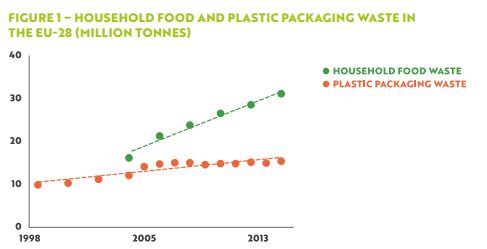
Corporate Waste (Supermarkets)
Besides the personal waste that we generate, there is also the waste generated in food related services and shops. We have all read in the news the absurd amount of food grocery stores throw away.
In 2014, in the US, one-third of the food produced was thrown away and 10% of that was by grocery stores. That is 1.95M tones.
USDA FAQ
There are many reasons for this, as such, the habit of overstocking products on display to always be able to satisfy the customer. We have been accustomed to see our shops full, and we would expect no less. On top of that, due to food safety regulations, there are sell-by-dates set, often days before the product goes “bad”. Other factors, like the shape or the beauty of an item or the popularity of it might make the supermarkets throw it.
Some supermarkets have taken action. Famously, the French branch Intermarche made a very successful campaign to introduce “ugly” fruits to their stands. Another variant is donating to food banks, like the giant Kroger has done.
So, What About Meal Replacements?
I hope it did not feel like a lecture. I just wanted to remark the importance of reducing waste around food. However, how could you do that?
There are many ways, tricks and tips that you can use. From buying less food, to buy locally, to make sure you eat all the food you cook. However, meal replacements can offer a much more complete solution to both problems: food waste and packaging waste.
What Are Meal Replacements?
I address this topic on another article to more depth; but in short a meal replacement or complete food is a nutritional product commonly supplied as a powder, bar or ready to drink that aims to satisfy your nutritional needs – providing a complete and balanced set of nutrients and typically containing 20 to 33% of your daily requirements.
These products are based upon the scientific understanding of human nutritional needs, commonly in accordance with the guidelines set by EFSA, WHO, US Health or the appropriate government body.
How Can Meal Replacements Help Reduce Food Waste?
In many ways, in fact.
Negligible to Zero Food Waste From Consumers
For starters, because of their format and nature, they last longer than most fresh food. A standard meal replacement powder can last between 6-12 month if stored in a dry shelf, away from light without losing its nutritional value.
On top of that, thanks the fact that you can measure how much you eat and store away the rest easily, there is minimal food waste. Actually, close to no food waste while consuming it. For instance, Huel (one of the best shakes in the UK, and biggest brands worldwide) calculates that they have prevented 900,000kg of food waste.
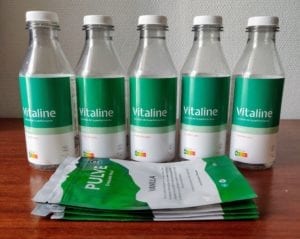
Furthermore, if taking into account the preparation and production; complete food is much more efficient. 40% of “normal food” is thrown away at some stage, while meal replacement powders are closer to 0%.
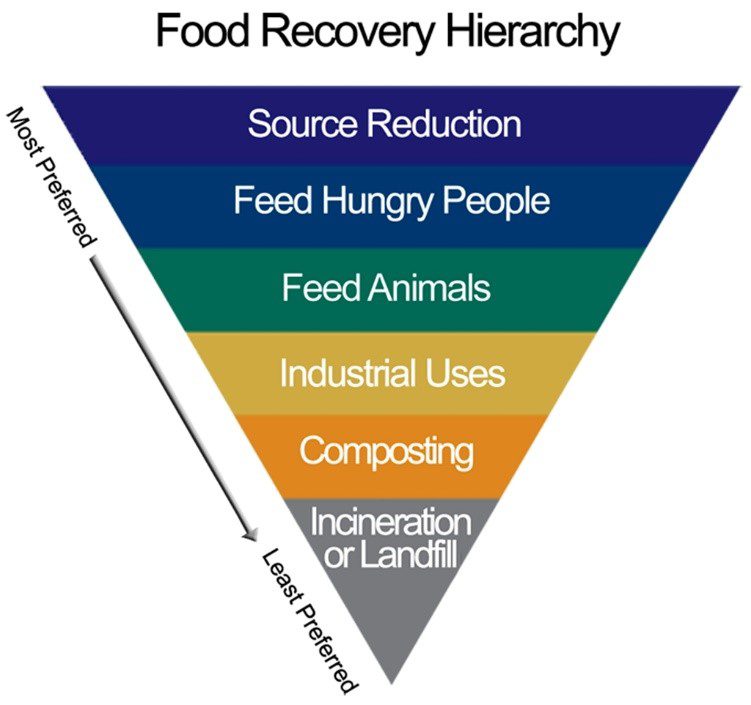
No Waste at the Supermarket Displays
Because the pouches of food can be stored for long and are often delivered to your house directly from their warehouses, this also prevents the food waste generated by supermarkets and grocery stores.
There are multiple ways to buy meal replacements, including on supermarkets; but the most common is to buy online via the manufacturer. Thus, it will be delivered to you directly and the products will not rot in supermarkets. Because of the longer storage, it is also easier for the manufacturer to produce according the needs and minimize unwanted food waste.
Waste from Food Packaging
Just like in most fruits, food comes wrapped in a packaging; a necessary tool, but one that generates more waste. In fact, many items in supermarkets are over-wrapped. How many times have you thought: “Why does it have so many layers of plastic?”
This is not limited to vegetables, but meat and fish are often wrapped in many layers of protective packaging. Likewise, pastry and snacks are very often the worst perpetrators.
In all honesty, we could probably all kind of products and find an example, easily, of excessive wrapping or packaging. In the name of safety, convenience or just simple design/appeal food is put behind walls of plastic.
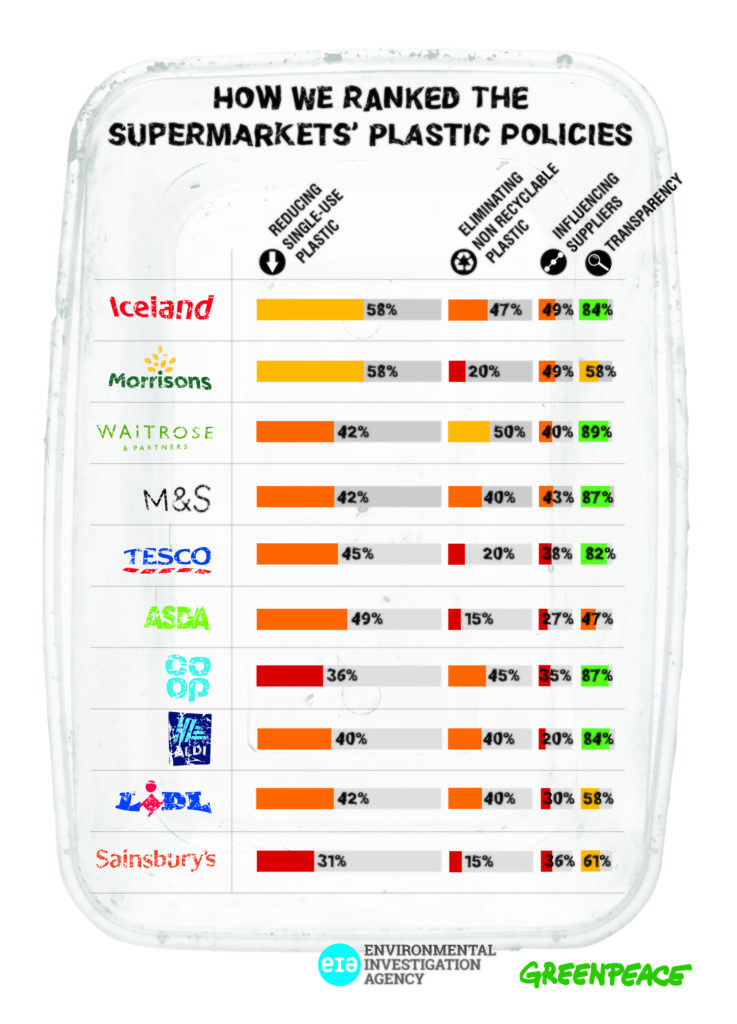
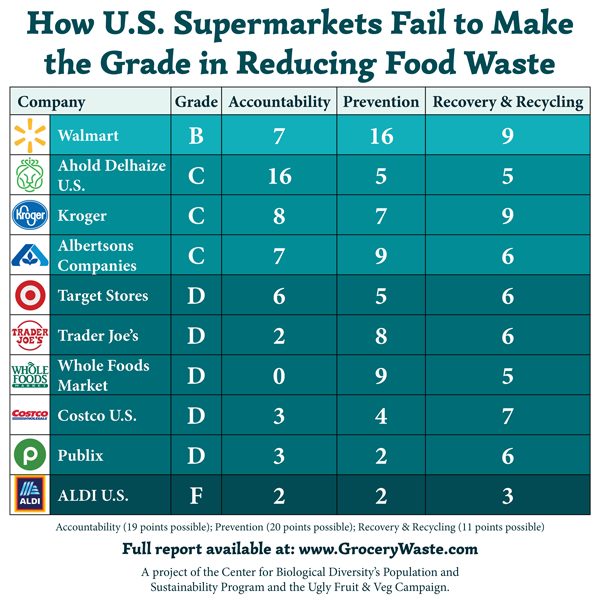
Plastic Recycling to Different Degrees
“Aha! But plastic is recyclable!” That is true, however, there are many types of plastic that can be recycled to a different degree and with varied difficulty. For a long time, primarily the collection of bottled plastic has been executed in many countries including the UK and US.
While non-bottle plastics are more widely recycled now, there are still limitations. On top of that, not all the plastic can be recycled. Some of the best example for that is the carrier bag plastic; which has been under scrutiny over the past years. In the EU nations, supermarkets and shops are now forced to charge you per carrier bag.
Funnily enough, which plastics you can recycle is dependent not only on the nation but in the community that you live.
Plastic bottles
Without going into a long rant, I think it is worth mentioning the issue of plastic bottles. Despite the fact that they can be widely and easily recycled, only about 30% gets recycled in the US. While this numbers will vary depending the country, it is a pretty accurate representation of Western society figures.
On top of that, the usage of recycling plastic to create new bottles is minimal currently. According to a GreenPeace report (recommended read), only a combined average 6.6% of recycled plastic is used globally by PepsiCo, Suntory, Danone, Dr Pepper Snapple and Nestle.
Other Wrappings:
Without deviating too much from the topic, I want to make one last mention to the other materials using for packaging: glass, cardboard, cartons/tetra-brick…
Recyclable ≠ Recycled
All these are materials that are widely recyclable, however, much like with plastic, plenty of this escapes recycling. Thus, while recycling is certainly a very positive and pro-active activity; reducing waste is key in order to improve our environmental impact and sustainability of our habits.
Meal Replacements Produce Minimal Packaging Waste
When it comes to packaging, meal replacements are very efficient, too. They occupy less space than “normal food” in most cases, they are more calorie and nutrient dense, and require less wrapping.
On top of that, most companies actively look to decrease their footprint and negative effect in the environment by taking active pro-recycling policies and look for improvements continuously.
Meal Replacement Powders: Most Efficient Food in Terms of Waste
They simply are. You can observe in the pictures below how minimal the waste is.

To put this into some numbers; Huel estimated that their customers have saved 240,000kg of plastic waste (calculations) with their meal replacement products.
I feel that pictures speak louder than words on this matter:

Other Types of Meal Replacements: Also Efficient
There are, however, other forms of complete foods. They also come in meal replacement bars and ready to drink formats. Particularly the second one is less efficient on reducing waste.
Ready to drinks or RTDs require more space and they use plastic bottles. Thus, they are often seen as the “Devil” by the complete food community. However, when comparing to food, they still offer a more efficient platform, no food waste and recyclable containers (discussed on my best RTD compilation).
This is an example of the waste I generated over the summer (July to August) by mainly consuming meal replacements. There are powder bags, individual servings (powder), bar wrappings and RTDs.
Committed to Recycling and Improved Packaging
As stated previously, being recyclable does not mean that people will recycle the packaging, nor means that the brands will try to reduce their environmental impact.
However, as a side note, I want to showcase that many brands have “zero/minimal waste” as part of their core identity and/or mission statement.
Zero food waste– As you only use the Huel you need to consume, and it has a year-long shelf life, Huel produces zero food waste. Our packaging also produces very little waste too.
Huel, About Us
Other commitments include:
- Bio-packaging. Certain brands like Bertrand (which have some of the best organic shakes) have taken active action and currently use biodegradable packaging.
- Minimal packaging. Some brands like Mana and Nutberg opt to reduce the packaging to a minimum.
- Recycling and using recycled plastics. All the brands use plastic and packaging that can be widely recycled. Plus, brands like the aforementioned Huel, have made a promise to use more and more recycled plastic in their packaging (RTD).
- Food to food-banks. This includes giants like Soylent that keep donating food to food-banks.
- Commitment to sustainable agriculture and food production. Brands, like Ambronite, are aware that the current food production is unsustainable and keep betting in favour of more sustainable models.
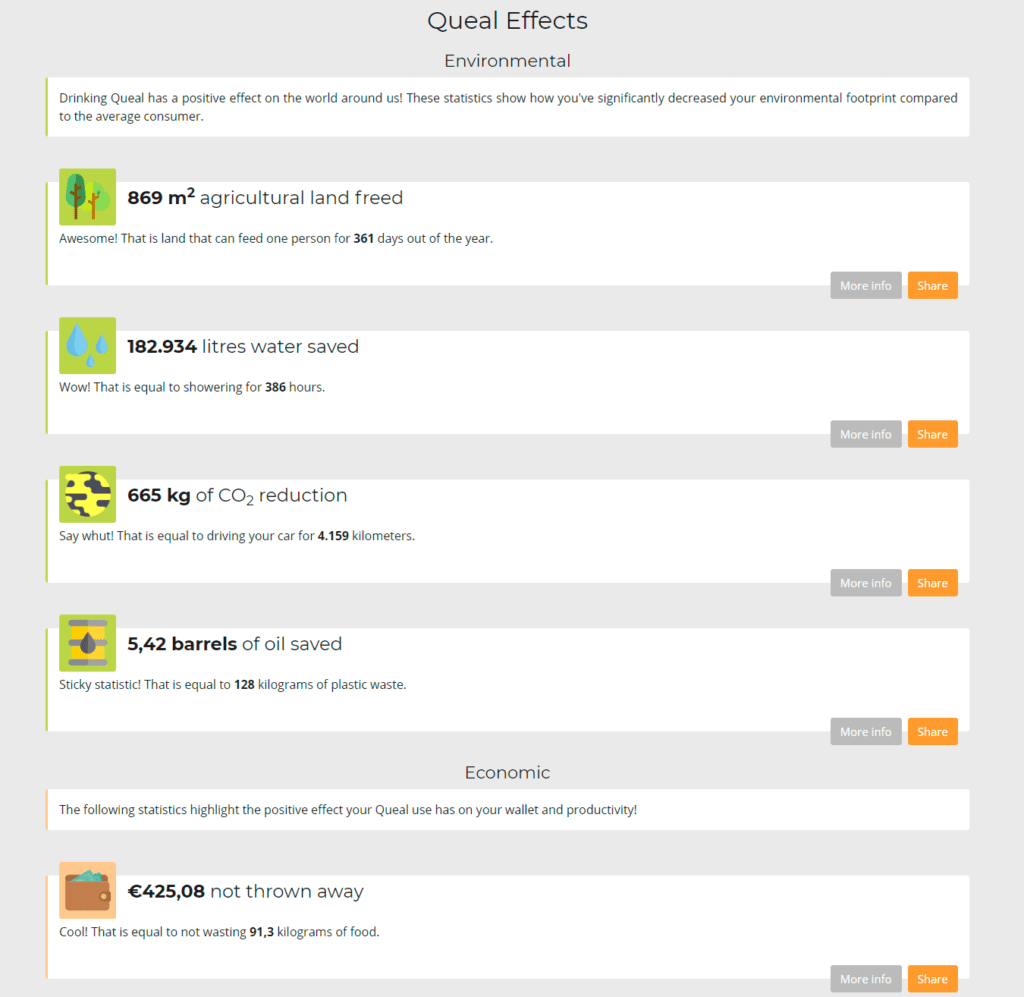
What About The Health Benefits?
This can be open for more debate, but a diet that incorporates meal replacements is a healthier alternative to most Western diets.
The reasons for such an statement are multiple.
- Omega-3s. Big part of the population does not consume enough of these essential fatty acids. A good balance of omega-3/6 is primordial to prevent scaly skin, decrease risk for chronic diseases and improve heart health.
- Vitamins and minerals. It has probably happened to you; you go to do blood works and they inform you that you are lacking certain vitamin or mineral. Because, meal replacements provide you with all the micronutrients you need, you should not face that issue anymore.
- Balanced macronutrients. It is often hard to find the right balance between fats, protein and carbs. Because complete food tell you how much of each they have, you will be able to balance it to your needs.
- Healthier on the go alternatives. This is particularly true if you are eating away or on the go, where the food options are more limited.
- 0 Trans fats. All the complete food brands avoid trans fats and other non- beneficial nutrients.
- Science backed nutrition. While there is much to learn about nutrition, complete foods are based on the current scientific knowledge and are always wary of new advancements, thus providing you “optimal” nutrition.
On top of that, when conducting a worldwide survey about complete foods, over 54% said that their health improved while consuming meal replacements (while only 1% said that it deteriorated).
Furthermore, it is worth noting that complete foods can be very effectively used to achieve dietary goals (weight loss, weight gain…).
Conclusion
Acting upon the waste that we generate is a very important issue. Plastic and food waste are two of the biggest economic, environmental and social problems in the Western Society.
Changing individual food consumption habits can have a very positive effect in reducing food and plastic waste that we currently generate. Hopefully, I have proven that meal replacements are a very useful tool to reduce both effectively, while having beneficial effects in most people’s diets.
Not only that but it can support upstream (agricultural land usage, water usage, food transportation…) changes in the food industry; due to the more efficient nature of complete foods.
Therefore, I believe that complete foods deserve a chance in our society as mean of efficient nutrition.
Sources
1.Unwrapped Packaging and Food Waste. An in-depth look to both food waste and packaging.
2. Packaging Waste Statistics (Europe, 2016-17).
4. UK Plastic usage by supermarkets, a report by Greenpeace.

